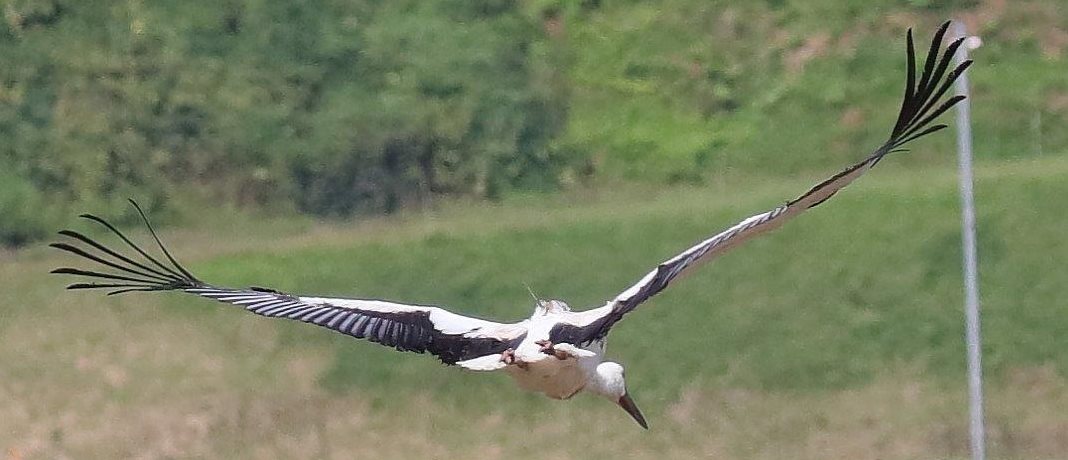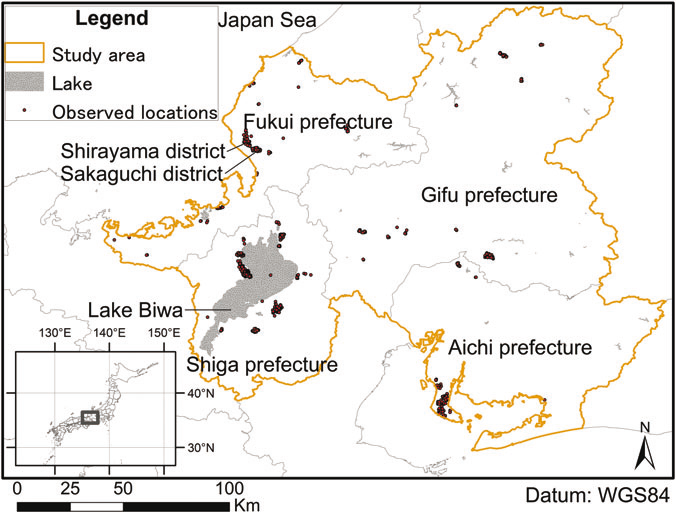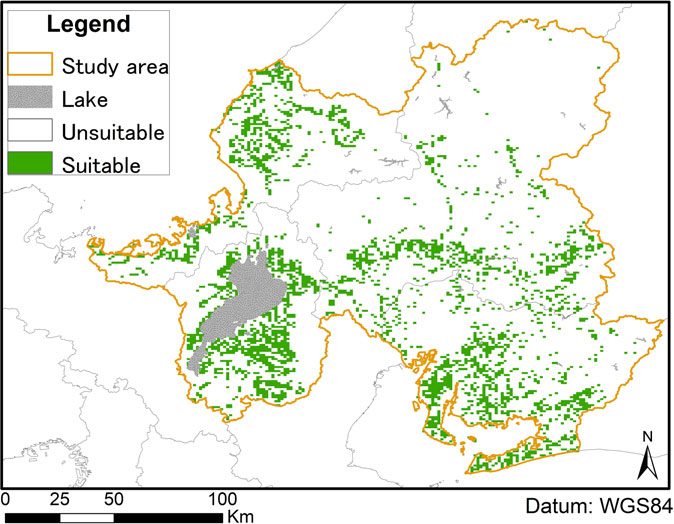← Back
Restoring rice paddies to help oriental white stork reintroduction success in Japan

Considering the suitability of the environment is the key to successfully reintroduce a species in an habitat where it disappeared. Oriental white stork disappeared from Japan fifty years ago,. The species reintroduction is now beginning , while their natural wetland habitats are declining, but may be compensate by man-made rice paddies.
The oriental white stork (Ciconia boyciana) is a large bird at the top of the food web in wetland ecosystems, and thus depend on those. It had disappeared from Japan in 1971, due in particular to the decline of wetlands. Following that, it was reintroduced there starting in 2005. However, to successfully reintroduce a species means to ensure they are released in place(s) suiting them. In the long term, it also means that the environment can sustain a number of individuals – including by preserving some areas if need be (see also Dorcas gazelles’ seasonal patterns of activity recorded by Argos Reintroducing Mhorr gazelles into the wild or How do lesser spotted eagles learn their migration routes? on reintroducing a species).
More info about animal tracking with Argos
A database of oriental white stork locations to model their population

Locations of the four tagged oriental white storks during the two years of their monitoring (credits Keio University, from [Yamada et al., 2019])
To evaluate this, four juvenile oriental white storks (two males, two females) were equipped with GPS-solar powered tags using Argos for data collection by Fukui prefecture. Their locations had been recorded for two years over central Japan. In parallel, land cover and land use data over the same area were retrieved from surveys. From this, six environment variables of importance for the storks were defined from past studies. Those variables are taking into account the fact that the oriental white storks have begun to favor rice paddies (as a replacement of natural wetlands) and like anyway wet areas. But they tend to prefer staying at their border, with forest close by, and a significant biodiversity around. On another side, they are known to avoid urbanized areas and interior of forests. With those data, a predictive model was built.
Environment restoration needed to provide oriental white storks with suitable habitats

Model results from current land use. Suitable habitat for oriental white storks is in green, representing 11% for the area (credits Keio University, from [Yamada et al., 2019])
11 % of the total area of the study region was found to be suitable habitat on the basis of a recent survey (14.3 % on 1983–1999 data). It seems that the extent of natural wetland in the study area is too small to support the reintroduced Stork population. Moreover, even if the storks are turning to rice paddies, those are shrinking, too, in Japan. Several programs have been established to restore natural wetlands. Restoring the paddy-dominated landscape should also be considered, as alternative to the former and key for further success in the reintroduction program.
Reference
Yamada Y, Itagawa S, Yoshida T, et al. Predicting the distribution of released Oriental White Stork (Ciconia boyciana) in central Japan. Ecol Res. 2019;34:277–285. https://doi.org/10.1111/1440-1703.1063
Photo: An oriental white stork with a microwave’s GPS Argos PTT (photo Fukui Prefecture)
